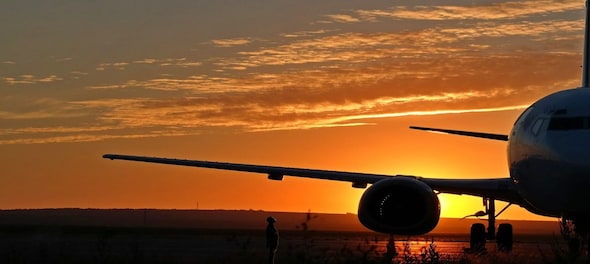
The Indian aviation market's recovery has been significantly impacted by caps on fare and capacity which have been placed by the government since May last year, the director-general of global airlines body IATA, Willie Walsh, said on Tuesday.
When India resumed scheduled domestic flights on May 25 last year after a two-month break in view of the COVID-19 lockdown, it had allowed carriers to operate not more than 33 percent of their pre-Covid domestic services. This capacity cap has been gradually increased and it now stands at 65 percent.
At a press conference, Walsh said, "Without question, the demand in India is way in excess to the capacity that is in the market at the moment… If these capacity constraints were removed, without question, there would be significantly more demand for flights that are operating in India."
Currently, Indian carriers are operating approximately 1,700 domestic flights daily, which is around 55 percent of their pre-Covid services. Along with capacity cap, India had imposed lower and upper caps on airfares based on flight duration when services were resumed on May 25 last year. The fare caps are still in place.
"Fare caps distort competition. All airlines have different cost bases and are in a position to offer capacity in the market at different prices. That is very positive to stimulate competition," the International Air Transport Association (IATA) director-general said. "The recovery has been significantly impacted by the regulation (fare caps and capacity cap) that has been put in place," he said.
The lower limits were imposed by India to protect financially weaker airlines. The upper limits were imposed to ensure that consumers are not overcharged.
"I can understand why the government introduced some of these measures (fare caps and capacity cap) initially. If you go back to January and February of 2020, we were not really clear about what we were dealing with. We were dealing with an unknown virus," Walsh said.
"I think you can accept that governments need to take measures in an environment like that. But we are well beyond that now. We understand this virus a lot better. Vaccines are available. Healthcare — in terms of how you treat the people who have the virus — has moved significantly forward," he said.
So, the measures that were put in place during the initial phase of the pandemic really do have to be challenged and questioned as to whether they are still relevant in an environment where the risk that "we face is very different now from the risk that we faced 15-17 months ago", he said.
The IATA has around 290 airlines as its members, comprising around 82 percent of the global traffic. Walsh said it is time for India to restart scheduled international flights.
India suspended scheduled international flights on March 23 last year. However, it has permitted special international flights under air bubble arrangements formed with around 27 countries since July last year.
"The initial reasons for introducing these restrictions (air bubble arrangements) are long since over because anyone who needed to be repatriated had plenty of opportunities to be repatriated," Walsh said.
What it is doing now is distorting the market, he said. "So, I would argue that those measures that may have been just about right when they were introduced are no longer relevant in the current environment," Walsh added.
Check out our in-depth Market Coverage, Business News & get real-time Stock Market Updates on CNBC-TV18. Also, Watch our channels CNBC-TV18, CNBC Awaaz and CNBC Bajar Live on-the-go!


Lok Sabha polls: Voter turnout in Rajasthan over 62%, down by 4% since 2019
Apr 28, 2024 8:49 AM
BJP replaces Poonam Mahajan with lawyer Ujjwal Nikam for Mumbai North Central Lok Sabha seat
Apr 27, 2024 7:53 PM

